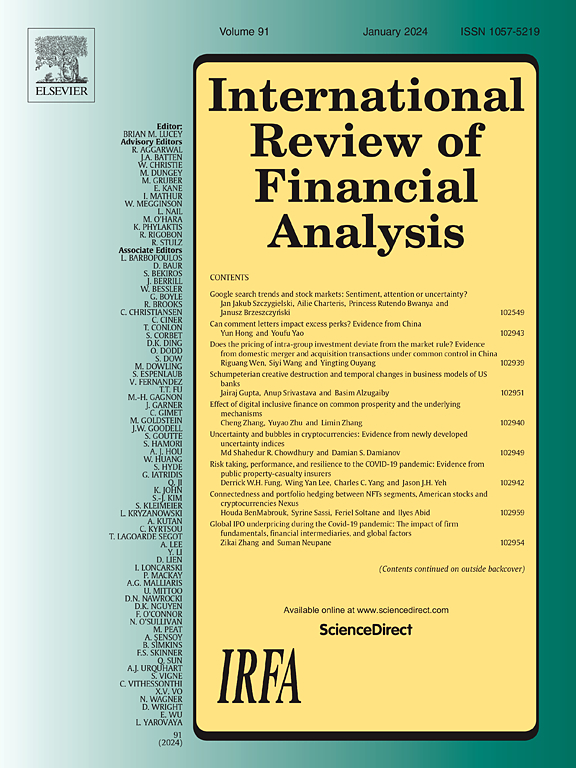Assessing Firm ESG Performance Through Corporate Survival: The Moderating Role of Firm Size
IF 7.5
1区 经济学
Q1 BUSINESS, FINANCE
引用次数: 0
Abstract
This study explores the relationship between Corporate Survival (CS), measured through both an accounting-based model (Altman Z-Score) and a market-based model (Merton Distance to Default), and ESG performance, measured through Refinitiv ESG ratings. Based on an IQR-normalized sample of data from non-financial companies listed on the STOXX 600 European index, the study conducted a fixed-effects regression analysis on data collected from 2015 to 2023, using both an overall sample and a regional classification methodology (Northern, Central, and Southern Europe). The initial findings indicated an overall negative and significant relationship between Z-Score and ESG performance, and a positive but non-significant relationship between the latter and Merton DD. However, incorporating the natural logarithm of total assets as a firm size measure within the fixed-effect regression analysis drastically changed these relationships, resulting in an overall positive and significant effect for both models, suggesting that higher CS levels involve superior ESG performance. Moreover, the moderating effect of firm size enabled a combined approach, as both CS measures were capable of being incorporated within the same regression model. However, even if this condition applies for all European regions, the Southern one showed some peculiarities that offsets the results obtained on both Northern and Central companies. Based on these findings, we conducted a Principal Component Analysis (PCA) to explore how this effect could serve as a valuable tool for better understanding ESG performance. This approach provided evidence that both accounting-based and market-based default risk prediction models can be used together for a better understanding of the relationship between ESG performance and CS if the moderating effect of firm size is controlled for.

求助全文
约1分钟内获得全文
求助全文
来源期刊

International Review of Financial Analysis
BUSINESS, FINANCE-
CiteScore
10.30
自引率
9.80%
发文量
366
期刊介绍:
The International Review of Financial Analysis (IRFA) is an impartial refereed journal designed to serve as a platform for high-quality financial research. It welcomes a diverse range of financial research topics and maintains an unbiased selection process. While not limited to U.S.-centric subjects, IRFA, as its title suggests, is open to valuable research contributions from around the world.
 求助内容:
求助内容: 应助结果提醒方式:
应助结果提醒方式:


